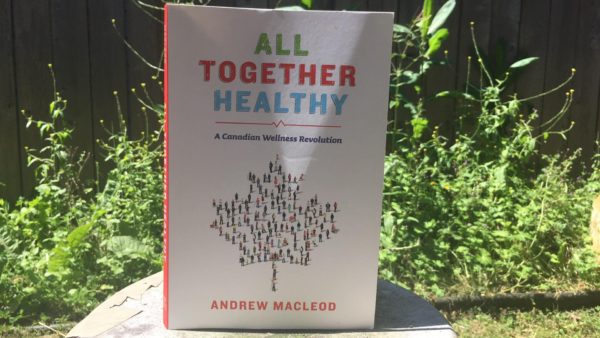Andrew MacLeod’s “All Together Healthy” offers accessible criticisms for an all-too-often inaccessible health care system

Andrew MacLeod’s new book humanizes health care, offering accessible criticisms of an all-too-often inaccessible system. Photo by Morgan Henderson, Photo Contributor
The joke goes like this: the premise of Breaking Bad would never work in Canada.
That’s funny, right? It’s because we have publicly subsidized health care and the United States doesn’t. There aren’t any high school chemistry teachers turned meth cooks up here!
Canadians are staunchly proud of our health care system; most consider it a hallmark of our national identity alongside maple syrup and hockey. It’s so intrinsically part of the socioeconomic and cultural landscapes of the country that no government, no matter the political leanings, would consider revoking the 1984 Health Act or ending public health care.
It’s great that this country is supportive of caring for one another, but while we’re busy patting ourselves on the back for not being as terrible as the States we’re failing to acknowledge the real, tangible ways that our health care system is falling apart around us.
This is a book that wouldn’t be out of place on a university syllabus, but its true strength is its accessibility for all audiences regardless of background knowledge or level of education.
Andrew MacLeod’s All Together Healthy takes the fabric of the health care system and neatly pulls out the threads of stories, policies, and ideas that are the foundation of Canada’s greatest pride and worst shame.
It’s shameful because the entire health care system prioritizes treating those in moments of great need while ignoring the causes that lead to that need in the first place. It’s shameful because our governments have touted health care as first class while communities across our country go without access to fresh drinking water, safe shelter, or nutrition. It’s shameful because our five pillars of the Canada Health Act — public administration, comprehensiveness, universality, portability, and accessibility — are not extended to supporting the very basic needs of our citizens.
All Together Healthy deftly criticizes these failings while offering thoughtful explanations and recommendations for future change. The chapters are thematically organized to introduce the reader to the existing health care system with family doctors, emergency rooms, and health spending transfers, and then delves into the question of what really makes a healthy society. From Indigenous communities to mental health supports to environmental dangers, MacLeod covers the intricacies and intersections of a system that prefers to treat the symptoms rather than the disease.
This is a book that wouldn’t be out of place on a university syllabus, but its true strength is its accessibility for all audiences regardless of background knowledge or level of education. The writing is brisk and to the point, and each chapter is relatively self-contained within the greater whole, which makes it easy to pace yourself and read it incrementally. In fact, it’s probably better to read it in small doses because the outlook is bleak for many people in Canada, especially for those who are poor or part of marginalized communities. As someone who regularly navigates the health system for several pre-existing conditions, it’s painfully clear that I’m exceptionally privileged to not have to simultaneously worry about food scarcity, housing instability, or precarious finances alongside health concerns.
In fact, it’s probably better to read it in small doses because the outlook is bleak for many people in Canada.
MacLeod rightfully notes that while the idea that health should be approached holistically is popular, few people in power are interested in supporting necessary services — like social work, early childhood education, or the provision of basic needs — that don’t involve medical professionals. Poverty is the leading indicator of health problems, and it’s often services that cater to marginalized communities vulnerable to income inequality that suffer from underfunding at all levels of government.
The Canadian health care system is an immovable object facing down the unstoppable force of increasing costs, patients, and inefficiency. All Together Healthy is a clarion call to system reform for better health services supported by social and financial programs to prevent relapse and encourage long-term stability. The final chapters offer glimpses of potential changes, and potential hope, for those who navigate Canada’s social safety nets. Whatever changes we want to see in the future, it’s clear that any increase in support will have to be fought for tooth and nail.








